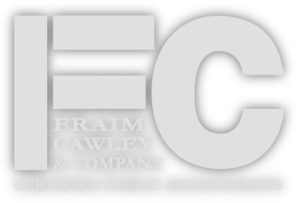Q: Can I avoid self-employment tax on partnership profits by having an S-Corp own my LLC interest?
A: Yes – if structured correctly. The S-Corp pays you a reasonable salary (subject to payroll tax) and passes the remaining income as distributions that escape self-employment tax. But the entity must have real business purpose, pay reasonable comp, and follow corporate formalities.
TL;DR
- Active LLC members = general partners. All profit is hit by 15.3 % self-employment tax under IRC §1402.
- S-Corp election for the operating entity is the simplest fix – but ownership limits often block it.
- S-Corp Buffer Strategy: form an S-Corp to own your partnership stake; salary is taxed, but pass-through profit isn’t.
- Respected in Watson. The IRS fought only the salary amount, not the structure.
- Economic substance matters. The S-Corp must do more than exist on paper – invoice, contract, bank account, minutes.
- Reasonable compensation is non-negotiable. Lowball salary kills the benefit faster than any other error.
One issue we frequently encounter is the misunderstanding of how profits from a multi-member LLC (taxed as a partnership) are treated. And with it, some unexpected – and unpleasant – tax bills.
The confusion often arises from equating the limited liability protection of an LLC with the tax treatment of a limited partner.
The two sound as though they may be synonymous, but they are very separate things with separate effects.
As a member of an LLC, in most instances and if structured properly you have limited liability from a legal standpoint. This means that, in the words of Black’s Law Dictionary:
“Limited liability is a form of legal protection for shareholders and owners that prevents individuals from being held personally responsible for their company’s debts or liabilities.”
Your liability is limited compared to the unlimited liability you have as a sole proprietor or as a partner in a regular (general) partnership.
This is a legal definition and protection.
When you are preparing your Form 1065 (partnership income tax return) or receive a K-1 from a partnership, there are two options for each member to be classified as:
- General partner (or LLC member-manager)
- Limited partner (or other LLC member)
We’ve already established that you have limited liability, so you’re probably a limited partner, right?
Not necessarily. In fact, if you are actively involved in the business operations, it is very unlikely that you would be a limited partner for tax purposes.

How the IRS and Courts Define a “General Partner” (For Tax Purposes)
This is where it gets nuanced. The IRS and courts don’t just look at what your title is – they look at what you actually do.
In Revenue Ruling 69-184, the IRS states that partners who are actively engaged in the business are by definition self-employed (emphasis ours):
“Bona fide members of a partnership are not employees of the partnership within the meaning of the Federal Insurance Contributions Act, the Federal Unemployment Tax Act, and the Collection of Income Tax at Source on Wages (chapters 21, 23, and 24, respectively, subtitle C, Internal Revenue Code of 1954). Such a partner who devotes his time and energies in the conduct of the trade or business of the partnership, or in providing services to the partnership as an independent contractor, is, in either event, a self-employed individual rather than an individual who, under the usual common law rules applicable in determining the employer-employee relationship, has the status of an employee. Sections 1402(a) and 3121(d)(2) of the Code.”
This was reinforced in Renkemeyer, Campbell & Weaver, LLP v. Commissioner, 136 T.C, where all of the partners tried to classify themselves as limited partners for tax purposes. The court ruling gives some background on the relevant statutes:
“Section 1402(a) defines net earnings from self-employment as: the gross income derived by an individual from any trade or business carried on by such individual, less the deductions allowed by this subtitle which are attributable to such trade or business, plus his distributive share (whether or not distributed) of income or loss described in section 702(a)(8) from any trade or business carried on by a partnership of which he is a member.”
“Section 702(a)(8) provides that in determining his income tax, each partner shall take into account separately his distributive share of the partnership’s taxable income or loss, exclusive of items requiring separate computation under other paragraphs of section 702(a). Therefore, in general, a partner must include his distributive share of partnership income in calculating his net earnings from self-employment. Fees for services, like those generated by a law partnership, are part of the partners’ distributive shares under section 702(a)(8). Consequently, such fees are generally included in calculating net earnings from self-employment, unless an exclusion applies.”
“Section 1402(a) provides several exclusions from the general self-employment tax rule. In particular, section 1402(a)(13) provides: there shall be excluded the distributive share of any item of income or loss of a limited partner, as such, other than guaranteed payments described in section 707(c) to that partner for services actually rendered to or on behalf of the partnership to the extent that those payments are established to be in the nature of remuneration for those services.”
So again:
- Profits to general partners = subject to self-employment tax
- Profits to limited partners = not subject to self-employment tax
The taxpayers in Renkemeyer tried to claim they were limited partners and thereby their share of the profits from the partnership should fall under the exclusion and not be subject to self-employment tax.
To support their position they maintained that:
“(a) their interests are designated as limited partnership interests in the law firm’s organizational documents, and
(b) his and Messrs. Campbell’s and Weaver’s interests in the law firm enjoy limited liability pursuant to Kansas law.”
This is almost identical to the misunderstanding most taxpayers have that we noted at the outset.
The court – unsurprisingly – disagreed. They noted that “the interest of a limited partner in a limited partnership is generally akin to that of a passive investor”, while all of the partners at the law firm had management authority and were actively providing services. And while it conceded that there was no statutory definition of limited partner:
“The legislative history of section 1402(a)(13) does not support a holding that Congress contemplated excluding partners who performed services for a partnership in their capacity as partners (i.e., acting in the manner of self-employed persons), from liability for self-employment taxes.”
While that case concerned LLPs (limited liability partnerships) and not LLCs (limited liability companies), the application of those principles is the same. Vincent J. Castigliola v. Commissioner TC Memo 2017-62 was an almost mirror image case with a law firm organized as an LLC. The taxpayers made the same arguments as in Renkemeyer and the court ruled against them on the same grounds – even citing Renkemeyer in their decision. This confirms that the same self-employment tax principles apply to LLCs, not just LLPs or traditional partnerships.

Why That Matters: Self-Employment Tax
The downside of being classified as a general partner?
All of the profits from business operations are subject to self-employment tax of 15.3% – both the employer and employee halves of Social Security and Medicare.
So if your business earns $100,000 in profit, you’re losing $15,300 before you even start paying federal and state income taxes.
As we’ve discussed many times, this is less than ideal for the majority of businesses earning $50,000 or more in profit.
Note: this would not be true for rental real estate. Most rental activities fall into a separate category and are not subject to self-employment tax.
Two Strategies to Avoid Self-Employment Tax as a General Partner
If you’re subject to self-employment (SE) tax on your share of LLC or partnership income, there are two primary strategies to avoid or reduce that tax exposure:

Option 1: Elect S-Corporation Tax Treatment for the Entity
This is the simplest and most commonly used solution.
- You file a Form 2553 and elect to have your LLC taxed as an S-Corporation.
- You pay yourself a reasonable salary (subject to payroll taxes)
- Any remaining profits flow to you as distributions and are not subject to SE tax
Boom. You’re done. Clean. Simple. Effective.
But What If That’s Not an Option?
S-Corps can be incredibly effective for reducing self-employment tax, but they come with structural limitations that don’t work in every business.
Some of the most common restrictions include:
- Limited to 100 or fewer shareholders
- Only one class of economic interest is allowed. All shareholders must have identical rights to distributions and liquidation proceeds. You can have voting and non-voting shares – but not preferred returns or tiered payouts.
- Shareholders must generally be U.S. individuals. S-Corps cannot have partnerships, C-Corps, or most LLCs as owners. Certain estates, grantor trusts, and 501(c)(3) nonprofits are permitted, but foreign individuals (nonresident aliens) are not.
- Distributions and income allocations must follow ownership percentages exactly. Unlike partnerships, you can’t have special allocations of profit, loss, or cash flow that differ from equity ownership.
That creates problems for businesses that:
- Have outside investors (especially non-individuals or foreign shareholders)
- Want to issue preferred returns or special rights
- Need flexible allocation of income, loss, or distributions
- Or in situations where you’re a minority owner and can’t force a structural change
What happens if any of those apply to you? Are you just stuck?

Option 2: Enter the S-Corp Buffer Strategy
Not necessarily. This is where strategy #2 comes in.
Instead of owning your membership interest in the LLC directly, you form an S-Corporation and have it own your stake in the partnership.
Here’s what that looks like:
- Your S-Corp becomes the partner (or member) of the LLC
- The LLC distributes income to the S-Corp
- The S-Corp pays you a reasonable salary – and the rest comes to you as distributions from the S-Corporation, which are not subject to SE tax
This effectively “buffers” you from self-employment tax.
This adds a layer of separation between you and the self-employment tax rules under IRC Section 1402. Because the individual is no longer the direct partner, SE tax does not apply at the shareholder level. You still work in the business. You still get paid. But you’re not being taxed like a general partner anymore.

No IRS or Court Challenges – But That Doesn’t Mean Anything Goes
To date, there are no IRS rulings or court decisions where the IRS has recharacterized a partnership interest held by an S-Corporation as subject to self-employment tax at the shareholder level.
That’s not the same as saying the IRS has endorsed the strategy – it simply means they haven’t directly addressed it or litigated against it. Most self-employment tax disputes (like Renkemeyer and Castigliola) involve individuals acting as partners, not corporations. As long as the S-Corp is the legal partner and the shareholder receives reasonable compensation, the income that flows through is not subject to self-employment tax under current rules.
In fact, this exact structure was present in Watson v. United States, 668 F.3d 1008 (8th Cir. 2012). In that case, the taxpayer’s S-Corporation owned a partnership interest in a CPA firm. The IRS challenged the amount of salary paid to the shareholder but did not attempt to apply self-employment tax to the passthrough income from the partnership. The court’s analysis focused solely on whether the compensation paid by the S-Corp was reasonable – reinforcing that the entity structure itself was respected.
Still, absence of scrutiny isn’t the same as protection.

The Strategy Needs Economic Substance
As with any tax structure, economic substance matters. If your S-Corp exists solely to reduce your SE tax liability – and performs no meaningful business function – you could run into trouble under the IRS’s “substance over form” doctrine (see Gregory v. Helvering, 293 U.S. 465 (1935).
To avoid that:
- The S-Corp should serve a real business purpose
- It should operate with basic corporate formalities
- It should pay you reasonable compensation for your work
- Ideally, it should have at least some independent activity – like invoicing, contracting, or managing your involvement in the partnership
This doesn’t mean your S-Corp needs a separate staff or office, but it should do more than just sit there as a paper shield.

A Flexible Workaround – Done Right
If you’re actively involved in a business taxed as a partnership, chances are you’re paying 15.3% self-employment tax on every dollar of profit. Electing S-Corp status is often the simplest solution – but when that’s off the table, using an S-Corp to own your partnership interest can reduce that burden significantly.
This strategy hasn’t been tested – or challenged – in court, but it aligns with the mechanics of existing tax law, and it fills a very real structural gap.
Just don’t treat it as a loophole. Treat it as what it is: a deliberate entity structure with meaningful responsibilities and compliance requirements. Follow the rules. Document your decisions. If anyone ever asks why you set things up this way, you’ll be in a strong position.
FAQ
Why are my LLC profits subject to self-employment tax?
If you materially participate, you’re a “general partner” for tax purposes – even if the LLC gives you limited liability. Profits are SE-taxable under §1402 and cases like Renkemeyer & Castigliola.
How does the S-Corp Buffer cut that tax?
Your S-Corp becomes the partner. It withholds payroll tax only on the salary it pays you; the rest passes through as S-Corp distributions exempt from SE tax.
Has the IRS ever challenged this structure?
Not directly. In Watson v. U.S. the IRS attacked the salary amount, not the buffer setup itself – suggesting the structure is respected when compensation is reasonable.
What counts as “reasonable” salary?
Pay yourself what you’d have to hire someone else to do your job – look at market comps, hours, and profit split. Lowballing invites payroll-tax reclassification.
What could make the IRS disallow the benefit?
A paper S-Corp with no economic substance, failure to issue salary, or ignoring corporate formalities could trigger substance-over-form recharacterization (see Gregory v. Helvering).
Any accounting, business, or tax advice contained in this communication, including attachments and enclosures, is not intended as a thorough, in-depth analysis of specific issues, nor a substitute for a formal opinion, nor is it sufficient to avoid tax-related penalties.




